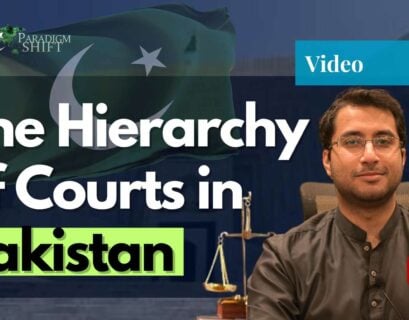Introduction
International Labour Organization (ILO) defines child labor as employment that harms a child’s physical and mental development and robs them of their youth, potential, and dignity.
Imagine children wearing torn clothes, not having proper shoes, walking barefoot on the roads and streets selling roses or toothpicks or balloons. Unfortunately, for a substantial percentage of children in Pakistan, this describes their lifetimes and fates. Child labor in Pakistan is rampant, especially in cities like Lahore, Karachi, Sialkot, Multan, Peshawar, and Loralai, where 500 child miners work in the area, and 1.5 million children are employed in Khyber-Pakhtunkhwa according to an ILO survey and the Society for the Protection of the Rights of the Child.
Moreover, the poll of 1996 dictates that the 3.3 million boys and girls between the ages of 5 and 14 worked in Pakistan’s economy, with the main motivation being to help with home businesses and augment household income. The statistics thereby indicate adverse circumstances and the inhibition of the golden era of childhood which is lost by a large portion of children.
The World Trade Organization placed sanctions on nations utilizing child labor, damaging Pakistani industries and their economy. However, Pakistan continues to have the third-largest child labor force in the world, with 12 million children being forced into different types of bonded labor, mostly in agriculture.
Iqbal Masih‘s Life
Iqbal Masih, a five-year-old boy was sold in bondage for approximately 7 dollars in order to pay the costs of his mother’s operation. He was supposed to work as a carpet weaver till the loan was compensated. However, that did not happen due to his family’s growing expenses thus restricting him to a life of abuse and torture. The 12-hour shift with half an hour breaks and on all 7 days of the week only earned him some cents.
The exceeding working hours and low wages were accompanied by the insufficient provision of food so that his hands do not grow larger and become a hindrance to carpet weaving. As a result, he was 12 inches shorter than the average boy of his age. He had dreams and aspirations like any child of his age, and the spirit he contained was unmatched.
It happened that he managed to dodge the owners and reach a local police station to complain about the inhuman treatment and his confinement to slavery by the factory owner. His action, however, bore no fruits as he was compelled to return back with his owner, thanks to the cheap bribe paid by the factory owner.
Although Iqbal’s attempt was an effort toward freedom, it only held him tighter in the deep-rooted shackles of slavery. Now the owner was more adamant to teach him a lesson and let no child escape ever, which led to mistreatment, injustice, and confinement to a greater degree than before.
The turning point in his story came with the ban on child labor by the Supreme Court, and as soon as he got to know about it, the ray of hope shone again and with it, he escaped and joined the Bonded Labor Liberation Front (BLLF). In no time, Ehsan Ullah Khan, the chairman of BLLF, heard his story and decided to liberate him from bondage, which he did so successfully.
After that, Iqbal Masih made it his goal to raise awareness against child labor and slavery. For this purpose, he traveled both nationally and internationally inviting people to support him in his fight against child labor. Furthermore, he was passionate about education and this was reflected when he completed 4 years of education in the time span of 2 years. Iqbal Masih said, “Children should have pens in their hands, not tools.”
On a dark day at the age of 12 in 1995, he was shot and died for speaking out against child labor in Pakistan. The story of Iqbal Masih ended with him believing that his purpose outweighed his own life.
Conclusion
The story of Iqbal Masih is both inspiring and disheartening where he fought till his last breath in the struggle against child labor with bravery and strength. His life was brought to an abrupt end when he was brutally killed and all the signs of his murder indicate the carpet industry mafia. This reflects how strong and powerful the ruling class of Pakistan is where the rules and laws hold no significance to them and the cost of the life of a poor is nothing.
The Tribune in 2021 reported that ”because of poor literacy rates and acute poverty, over 12.5 million children in Pakistan engage in different types of child labor. Illiterate parents sometimes force their children to work from an early age and use them as a source of income”.
Hence it could be concluded that the rule of the elite is being followed in Pakistan, where as long as child labor benefits them, it won’t cease to exist and the children will continue to suffer until and unless the laws and policies are planned out and implemented effectively while holding the elite accountable.
If you want to submit your articles, research papers, and book reviews, please check the Submissions page.
The views and opinions expressed in this article/paper are the author’s own and do not necessarily reflect the editorial position of Paradigm Shift.



















